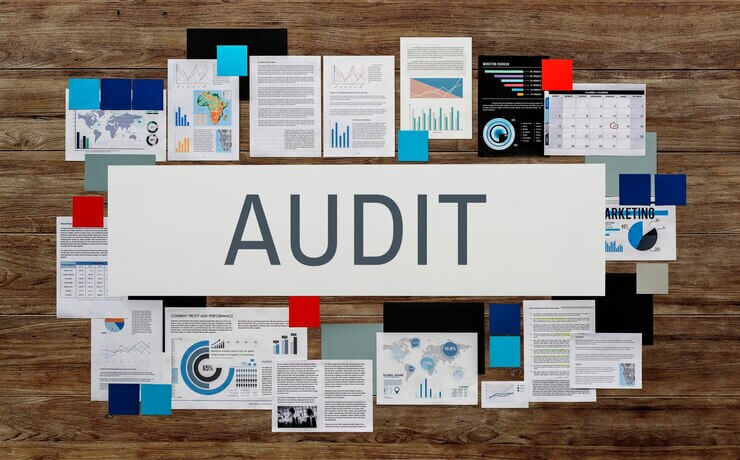Table of Contents
ToggleIn today’s competitive global market, food safety and product quality are not just regulatory requirements but essential for protecting consumers and building trust with retailers. Consumers, retailers, and regulators expect organisations to maintain the highest standards for producing, handling, and distributing products. One widely recognised way to demonstrate this commitment is through the BRC audit, part of the BRCGS (Brand Reputation through Compliance Global Standard) certification process. But what exactly is a BRC audit, and what is the impact of failing it? Let’s break it down.
What does BRC audit stand for? – BRC audit meaning
A BRC audit refers to a formal, independent assessment to verify whether a business complies with the BRCGS requirements (Brand Reputation through Compliance Global Standards) for food safety, packaging, storage, and distribution. These standards are recognised worldwide and are often required by major retailers, suppliers, and manufacturers in the food supply chain.
The audit examines key aspects such as:
- Food safety and quality management systems
- Hazard Analysis and Critical Control Points (HACCP) implementation
- Good Manufacturing Practices (GMP)
- Site standards and hygiene
- Employee training and competence
- Traceability and product authenticity
Successful completion of the audit results in certification, demonstrating a company’s commitment to maintaining high product quality, safety, and legal compliance.
Types of BRC Audit Grades
The outcome of a BRC audit is graded based on performance:
- Grade AA – Highest grade, excellent compliance, very few issues.
- Grade A – Strong result, minor issues, but still compliant.
- Grade B – Moderate non-conformities, needs improvement.
- Grade C – Significant weaknesses, higher risk, and corrective action are required.
- Grade D / Fail – Serious failures, such as certification, may be suspended or withdrawn.
These BRC audit grades affect how often audits are repeated (e.g., annually or every six months) and influence a company’s reputation in the supply chain.
BRC Audit Checklist: Goals, Purpose and Importance
A BRC audit checklist provides a structured tool that helps auditors systematically review processes, procedures, and records against specific standards or requirements. It ensures no critical areas are overlooked, making the audit more consistent, objective, and thorough. For businesses, the checklist simplifies audit preparation and highlights potential risks, non-conformities, and improvement opportunities before the assessment. By following a well-designed BRC audit checklist, organisations can maintain high standards, build customer trust, and increase their chances of achieving certification success, making it a vital tool for continual improvement and regulatory compliance.
The main goals of a BRC audit are:
- Food Safety Assurance – To verify that products are safe for consumption.
- Compliance – To ensure companies meet BRCGS requirements and local and international regulations.
- Retailer Confidence – To assure retailers and brands that suppliers maintain global standards.
- Continuous Improvement – To identify areas for enhancement and encourage best practices in food safety and quality.
Now discuss what happens if You Fail a BRC Audit?
Failing a BRC audit means your organisation did not meet the standard’s minimum requirements, often due to primary or critical non-conformities. The consequences can be severe, including:
1. Loss of Certification
If your company already holds BRC certification, a non-certificated audit can result in suspension or withdrawal of that certification. Many retailers and suppliers may refuse to do business with you without it.
2. Business and Financial Impact
A lot of big stores and shops need products to be BRC certified before they can be sold. If you lose it, you could lose business, money, and chances to sell your products.
3. Damaged Reputation
A non-certificated audit can raise questions about your company’s reliability, quality standards, and ability to maintain safe production practices. This can affect customer confidence and supplier relationships.
4. Increased Scrutiny and Re-Audit
In most cases, you must implement corrective actions to address the non-conformities and undergo a re-audit. This costs the business more money, time, and stress.
5. Operational Disruption
Failing may highlight deep-rooted issues such as poor hygiene practices, weak management systems, or inadequate staff training—forcing companies to make significant operational changes before they can be re-certified.
Steps After Failing a BRC Audit
The good news is that failing the audit isn’t the end of the world. Here’s what you should do next:
- Corrective Action Plan (CAP): Your company must submit a detailed plan to address each non-conformity. This includes corrective measures, responsible persons, and deadlines
. - Follow-Up Audit: A re-audit or verification visit will be scheduled to confirm that corrective actions have been implemented effectively.
- Rebuilding Confidence: By promptly fixing issues and demonstrating improvement, you can restore trust with auditors, customers, and retail partners.
How to Avoid Failing a BRC Audit
Avoiding failure in a BRC audit starts with intense preparation and consistent adherence to food safety and quality standards.
- Prepare thoroughly: Conduct internal audits and gap analyses.
- Train staff regularly: Ensure employees understand procedures and food safety practices.
- Maintain documentation: Keep accurate and up-to-date records.
- Address non-conformities early: Correct minor issues before they grow into critical failures.
- Engage leadership: Management must be committed to supporting compliance.
Conclusion
A BRC audit is more than just a way to meet requirements; it’s a chance to show how good you are at food safety, quality, and running your business. However, failing a BRC audit certification can harm your business, such as losing your certification or damaging your business relationships. If you prepare, train, and are dedicated to making things better all the time, your business can pass a BRC audit and gain the trust and credibility that comes with it. Call us to know more about it.
Struggling with a BRC audit? Don’t worry — we’ll guide you through certification
Let’s discuss how we can help your organisation achieve and maintain BRC compliance
Contact UsFAQs
BRC audits are usually carried out annually, but the frequency can depend on your grade. For example, if you score lower (such as a C or D grade), you may need to undergo a re-audit every six months.
Yes. You can appeal the decision through the certification body if you believe the audit findings are incorrect. However, it's essential to provide strong evidence to support your case.
Most major retailers, suppliers, and manufacturers in the food supply chain require BRC certification as proof of food safety and quality standards.
Common reasons include poor hygiene practices, inadequate documentation, lack of staff training, weak traceability systems, or critical non-conformities in food safety controls.
Preparation involves conducting internal audits, running mock inspections, training staff, keeping accurate records, and ensuring your HACCP and quality systems are entirely in place.




